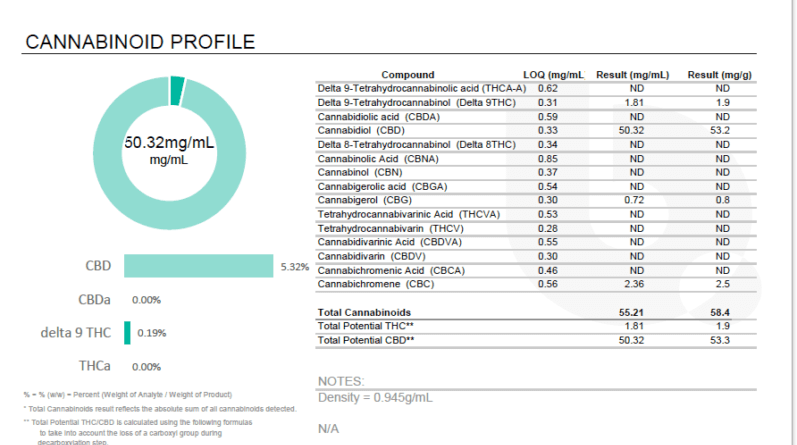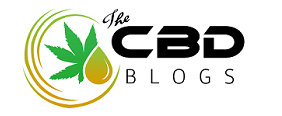How to Read a CBD Certificate of Analysis (COA) and Why it is Important?
What is a Certificate of Analysis? How does one read a third-party lab report? Over the next several blogs I will dive into analysis and how understanding the results is important for the CBD oil consumer.
To begin, every consumable CBD (edible) product should have a certificate of analysis from an independent third-party lab. The most informative part of the analysis is the cannabinoid profile, a copy is shown below.

The first item to examine is the lot number of the article tested. Make sure the lot number corresponds to the product you are or have purchased. Next, look at the “headline” numbers. Most labs have a section highlighting the main cannabinoids. The CBD concentration should match up with the label of your product. Also check that the delta 9 THC value is under 0.3%.
Let’s dive a little deeper into the meaning of concentration, and the relationship and differences between concentration and dose. The concentration is defined as the amount of a given substance in a set volume. For organic cbd oil calculations, the amount is given in milligrams (mg) and the volume is milliliters (ml). So, if you have one ml of MCT tincture, the concentration tells you how many mg of CBD are in that one ml. One ml of a 50 mg/ml mixture would contain 50 mg of CBD. A 50 ml bottle, thus contains 50ml x 50 mg/ml = 2500 mg CBD.
The dose is related to the concentration, but the two often get mixed up. The concentration determines the volume needed to achieve the desired dose. This is determined by dividing the desired dose (in mg) by the concentration (in mg/ml). Say you want to consume 150 mg of CBD. 150 mg divided by 50 mg/ml gives 3 ml. This is your dose. Put another way, the dose is simply the concentration times the volume ingested. 3 times 50 equals 150 mg.
Back to the certificate of analysis(COA). If you dive deeper into the data on the right, you’ll see a column labeled LOQ. What is LOQ? It is the lowest amount of a substance that can be accurately quantified. LOQ means the limit of quantification. The better the lab, the lower this number will be. Each substance analyzed will have a different LOQ, hence the tabular listing. Of importance to us is that the limit of quantification for delta 9 THC needs to be sufficiently low to tell us that the item is under 0.3%.
Limit of detection is very simple. In your hemp concentrate the limit of detection of CBD is simply the minimum amount the machine can “see”. Below the limit of detection of hemp oil the minor compounds in the CBD oil will not be observed.
Finally, some labs will also give you the weight percent of each component. This is an easy one to understand: it’s just the amount of the component (in mg) divided by the amount of tincture tested (in mg).
In Vermont, many labs are capable of running potency tests. Finding a lab that does the full suite of testing is becoming easier in this state, as more labs come on line and become certified.
This post should help you read a potency report. Next, we tackle the other tests that should be done on an edible product.
To buy full panel 3rd party tested CBD products shop here!
